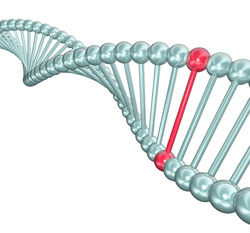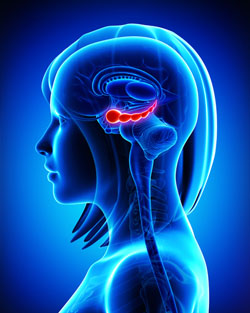Adherence to Antidepressants Associated with Lower Mortality
A large study from Israel suggests that over a 4-year period, people who regularly took their prescribed antidepressants were less likely to die of any cause during that period.
The study, published in the Journal of Clinical Psychiatry in 2016, used data from an Israeli health provider that covers 53% of the nation’s population. It included 251,745 patients aged 40 and up who filled a prescription for an antidepressant at least once between 2008 and 2011.
Researchers led by Amir Krivoy looked at how much of the time people actually filled their prescriptions. Patients who filled their prescriptions more of the time were less likely to die during the study period than those who did not fill their prescriptions regularly.
Editor’s Note: This study by Krivoy and colleagues provides more evidence of the benefit of long-term antidepressants. People who have had two or three episodes of unipolar depression should consider long-term prevention with antidepressants over the course of their lifetime, in the way that people take blood pressure medications long-term to prevent heart attacks. In addition to lowering mortality, antidepressants also reduce the rate of relapse by 75% compared to placebo. More time on antidepressants also preserves hippocampal volume with aging.
In Population Near Uranium Plant, Headaches Predicted a Thyroid Problem
People with headache disorders may be at greater risk of developing hypothyroidism, a condition in which the thyroid does not produce enough thyroid hormone and various body processes start to slow down. A study by researcher Andrew Martin and colleagues in the Journal of Head and Face Pain is the largest to examine the likelihood that headache sufferers may be at risk for hypothyroidism.
About 2% of Americans develop hypothyroidism. The study by Martin and colleagues used data from a 20-year medical monitoring program for people who lived near a uranium processing plant in Ohio. The authors reported that people with pre-existing headache disorders had a 21% increased risk of new onset hypothyroidism during that period, while people who reported that they had migraines or regularly used headache medication had a 41% increased risk of hypothyroidism. People with migraines were most likely to develop hypothyroidism in the study. Female sex and age are additional risk factors for hypothyroidism. About 12% of the US population experiences migraines.
Melatonin May Improve Headaches
A 2016 article in the Journal of Head and Face Pain reviewed randomized placebo-controlled trials of melatonin for the treatment of headaches. Author Amy A. Gelfand and colleagues reported that 10 mg of melatonin was superior to placebo in the treatment of cluster headaches. For treatment of migraines, 3 mg of immediate-release melatonin improved headaches compared to placebo, while 2 mg of sustained-release melatonin was insufficient.
The authors also found non–placebo controlled data suggesting that melatonin may be helpful for other types of headaches. More research is needed to clarify melatonin’s effects in different headache disorders.
Immune Therapy with IVIG May Help Children with PANDAS
 A small number of children exposed to streptococcal bacteria have an autoimmune response that manifests in sudden, severe obsessive-compulsive behaviors and tics. This disorder is known as PANDAS: pediatric autoimmune neuropsychiatric disorder associated with streptococcal infection, and it resembles the broader disorder PANS, which can occur after other types of bacterial or viral infections.
A small number of children exposed to streptococcal bacteria have an autoimmune response that manifests in sudden, severe obsessive-compulsive behaviors and tics. This disorder is known as PANDAS: pediatric autoimmune neuropsychiatric disorder associated with streptococcal infection, and it resembles the broader disorder PANS, which can occur after other types of bacterial or viral infections.
Research on treatments for PANDAS and PANS is scant, but therapies that target the immune system seem to have more success than typical psychiatric treatments. In a 2015 article in the Journal of Child and Adolescent Psychiatry, researcher Miro Kovacevic and colleagues described a case series of 12 youths with PANDAS who were treated with intravenous immunoglobin (IVIG), a treatment designed to regulate the immune system. (The participants also met diagnostic criteria for PANS.)
The authors suggest that PANDAS symptoms result from a misdirected immune response that attacks the patient’s brain instead of or in addition to attacking the initial infection. IVIG treatment uses a mixture of antibodies from about 1,000 people. When this mixture is infused into the patient’s blood, the antibodies help deflect the autoimmune attack on the patient’s body. All of the 12 patients had a good long-term response to IVIG. Some did well after just one infusion, while two needed a second infusion because they did not respond to the first, and five had recurring symptoms that required a second infusion. All of the patients had previously received two other types of treatment: a 5-day course of steroids and antibiotics, neither of which produced immediate improvements.
The authors concluded that effective long-term treatment of PANS or PANDAS should combine immune therapy, prevention of future infections with antibiotics, and treatment that targets their psychiatric symptoms, such as anti-obsessional medication or cognitive-behavioral therapy.
More News About Genetic Risk for Bipolar Disorder
In a 2017 article in the Journal of Clinical Psychiatry, researcher Paul E. Croarkin and colleagues describe findings from their study of genetic risk factors for early-onset bipolar disorder. The researchers focused on single nucleotide polymorphisms (SNPs), which are variations in a single base pair of a DNA sequence. SNPs are normal variations or copying errors that occur when DNA is replicated. Croarkin and colleagues tracked 8 SNPs that had been linked to bipolar disorder in previous studies. They examined 69 patients from a study of early-onset mania, 732 adult patients with bipolar disorder (including 192 with early-onset illness), and 776 healthy controls. The researchers compared patients with early-onset illness to controls, and also looked for connections between specific SNPs and early-onset illness.
The SNPs analyzed in the study map to three genes that have repeatedly been associated with the risk for bipolar disorder in other studies. These include CACNA1C (one of several genes that create calcium channels), ANK3, and ODZ4. Croarkin and colleagues determined that the presence of these SNPs, particularly the ones that involved the CACNA1C gene, were associated with early-onset bipolar disorder.
Editor’s Note: These findings may lead to better treatment for early-onset bipolar disorder. The CACNA1C calcium influx gene that has repeatedly been connected to bipolar illness can be blocked by the calcium channel blocker nimodipine. Nimodipine has lithium-like effects in mania and depression in adults. One case report by Pablo A. Davanzo in the Journal of Child and Adolescent Psychopharmacology described success using nimodipine and the thyroid medication levothyroxine to treat a 13-year-old boy with very rapid cycling bipolar disorder that had previously failed to respond to multiple medications.
Nimodipine deserves further study in children showing symptoms of bipolar disorder. The company Genomind provides testing for the CACNA1C gene. We hope it will soon be determined whether the presence of this SNP predicts a good response to nimodipine.
Being able to predict who will get bipolar disorder is a long way off. However, there are some clear risk factors. Young people from families that have had several generations of bipolar disorder or related disorders are at increased risk for bipolar disorder. This risk increases for children who experience adversity in childhood, such as abuse or neglect. The presence of early mild symptoms of mania, depression, or disruptive behavior further increase this risk.
For doctors, a patient’s clinical history of these three types of risk factors can help identify whether they are at increased risk of developing bipolar disorder. Patients with several risk factors should be observed closely and treated with psychotherapy or medication as needed.
Parents of children between the ages of 2 and 12 who have shown some signs of mood or behavioral symptoms are encouraged to join our Child Network. We provide a secure online platform where parents record their children’s symptoms of anxiety, depression, attention-deficit hyperactivity disorder (ADHD), oppositional behavior, and mania on a weekly basis. Symptoms are charted over time in a graphical depiction that can be shared with the child’s doctor. For more information, see page 11 of this issue. To join, visit our website bipolarnews.org and click on the tab for the Child Network.
Parents’ History of Mood and Anxiety Disorders Increases Risk of These Disorders in Offspring
A 2016 article by researcher Petra J. Havinga and colleagues in the Journal of Clinical Psychiatry suggests that offspring of a parent with a mood or anxiety disorder are at higher risk for these disorders than offspring from non-ill parents. Havinga and colleagues studied 523 offspring of parents with one of these disorders. Among these offspring, 38.0% had had a mood or anxiety disorder by age 20, and 64.7% had had such a disorder by age 35. (Rates of these disorders in the general population are closer to 10%.)
The risk of offspring developing one of these disorders was even higher when both parents had a history of a mood or anxiety disorder, when a parent had an early onset of one of these illnesses, and when the offspring was female. The good news is that balanced family functioning had a protective effect, reducing the likelihood that the offspring would develop a mood or anxiety disorder.
Researcher David Axelson reported in a 2015 study published in the American Journal of Psychiatry that approximately 74% of the offspring of a parent with bipolar disorder went on to have a major psychiatric diagnosis over 6.7 years of followup. Similarly, researcher Myrna Weissman and colleagues reported in 2006 that the same high incidence of psychiatric diagnoses was true of the offspring of a parent with unipolar depression over 20 years of followup.
Editor’s Note: It is important to be vigilant for mood or behavioral disorders that may emerge in the offspring of a parent with a mood or anxiety disorder. Children at high risk should maintain a healthy diet and good sleep hygiene, exercise regularly, and perhaps try practicing mindfulness and meditation, as recommended by researcher Jim Hudziak. Family-focused therapy (developed by researcher David Miklowitz) can help when early symptoms appear in the offspring of a parent with bipolar disorder.
Another option is joining our Child Network, a secure online program that allows parents to track their children’s symptoms of anxiety, depression, attention-deficit hyperactivity disorder (ADHD), oppositional behavior, and mania. This may facilitate earlier recognition and treatment of dysfunctional symptoms, which can be treated with psychotherapy and medication.
Recent Birth Cohorts May Have More Depression and Bipolar Disorder
In medicine, the ‘cohort effect’ describes the idea that more recent birth cohorts have an increased incidence and younger age of onset of their illness. A 2016 article by this editor (Robert M. Post) and colleagues in the Journal of Clinical Psychiatry presented evidence that younger patients with bipolar disorder have an earlier age of onset of bipolar disorder and more relatives with mood disorders than older patients with bipolar disorder.
The research was carried out by the Bipolar Collaborative Network in four US cities (Dallas, Cincinatti, Los Angeles, and Bethesda) and three northern European ones (Utrecht, Freiburg, and Munich). On both continents, patients born more recently had an earlier age of onset of their bipolar disorder. Younger patients also had parents and grandparents with a greater incidence of depression, bipolar disorder, and alcohol and substance abuse compared to older patients.
Editor’s Note: Other researchers have found evidence of a cohort effect for unipolar depression, substance abuse, and attention-deficit hyperactivity disorder (ADHD). The data indicate that childhood onset of psychiatric illnesses may be becoming more common. Research aimed at earlier detection and treatment is needed to reverse these trends.
Specific Regions of Hippocampus Linked to Bipolar Disorder
It has been clear for some time that the volume of the hippocampus, a brain region implicated in mood and memory processing, plays a role in bipolar disorder. A 2017 article by researcher Bo Cao and colleagues in the journal Molecular Psychiatry links loss of volume in specific sub-regions of the hippocampus with bipolar disorder.
The study by Cao and colleagues used magnetic resonance imaging (MRI) and a special segmentation technique to compare the volume of certain hippocampal sub-regions across people with bipolar disorder, people with major depression, and healthy control participants.
Participants with bipolar disorder had lower volumes in subfield 4 of the cornu ammonis, two cellular layers (the granule cell layer and the molecular layer), and the tail part of the seahorse-shaped hippocampus compared to the other subjects. Participants with bipolar I disorder had particularly severe volume loss in these areas.
Cao and colleagues also found that volume loss progressed along with the illness. The volumes of the right cornu ammonis, the molecular layer, and the subiculum decreased further in patients who had bipolar disorder for longer. As manic episodes increased, the volume of both sides of the cornu ammonis and the hippocampal tail decreased.
Therapy Reduces Relapses, Promotes Medication Adherence
A 2017 meta-analysis published in the British Journal of Psychiatry indicates that psychosocial interventions were linked to reduced relapse rates, better adherence to medication, and other benefits in people with bipolar disorder. The meta-analysis by researcher Mary Lou Chatterton and colleagues evaluated data from 41 studies with a total of 3,119 participants. The studies examined psychosocial interventions such as cognitive-behavioral therapy, psychoeducation, and family-focused therapy compared to treatment as usual.
Chatterton and colleagues found that interventions that targeted family members who act as caregivers reduced manic and depressive relapse rates. Combined psychoeducation and cognitive-behavioral therapy was more successful than any other intervention, and had a large effect in reducing symptoms of mania. This combination also improved general functioning. Psychoeducation alone and in combination with cognitive behavioral therapy reduced medication non-adherence. Unfortunately, no intervention reduced depressive symptoms.
Mood Stabilizers with Atypical Antipsychotics Reduce Relapses Compared to Mood Stabilizers Alone or with Typical Antipsychotics
An Israeli study reports that treatment with mood stabilizers and atypical antipsychotics reduces bipolar relapses compared to treatment with mood stabilizers alone or mood stabilizers combined with typical antipsychotics. The study, by Eldar Hochman and colleagues in the journal Bipolar Disorders, compared one-year hospitalization rates after patients with bipolar disorder were discharged from the hospital following a manic episode. All of the 201 discharged patients were prescribed a mood stabilizer (lithium or valproate), and some were also prescribed an antipsychotic, either atypical or typical.
Those participants who received the combination of a mood stabilizer and an atypical antipsychotic had re-hospitalization rates of 6.3% compared to 24.3% of those who received mood stabilizers alone and 20.6% of those who received mood stabilizers with a typical antipsychotic.
While the study did not determine which treatment is best for ongoing maintenance treatment of bipolar disorder, it does suggest that the combination of mood stabilizers and atypical antipsychotics can reduce hospitalizations during the one-year period following a manic episode.










